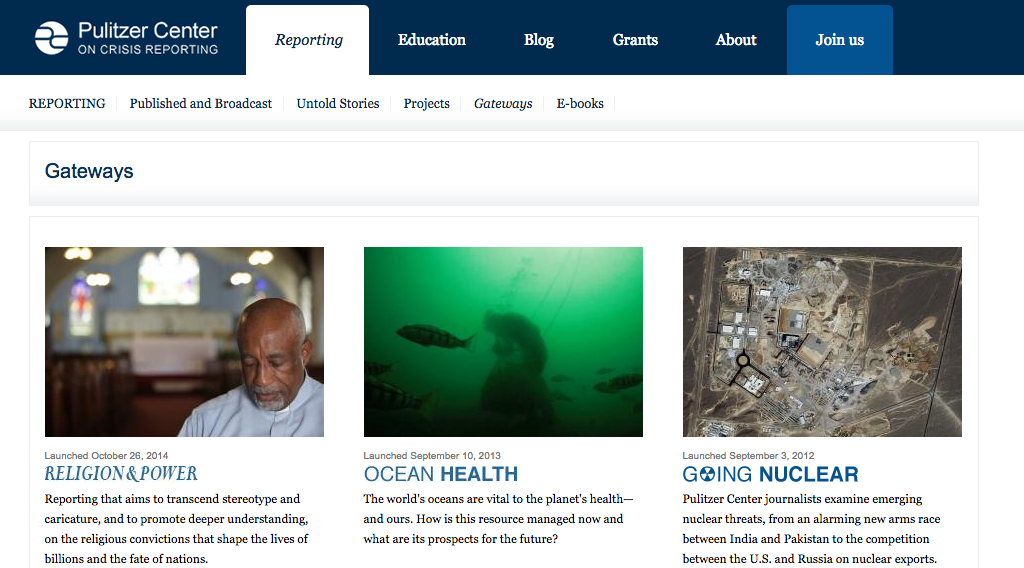Distributing your story effectively is a lot more than getting it published or broadcast in the mainstream media. Today’s media landscape offers a multitude of ways to keep your story alive and have it reach a broader audience. Truly successful distribution requires a real investment of time and energy – but if you’re committed to drawing attention to teh issue you’ve reported on, it’s a critical part of the process.
Multi-purpose, re-purpose, re-mix
Having multi-media elements to start with will make your project easier to distribute across platforms and outlets. With our project on the conflict in the Democratic Republic of Congo, the reporter’s experience was primarily radio and print. We encouraged him to blog from the field, and to partner with a cameraperson to collect video. We then introduced him to the public television program WorldFocus. They jumped at the opportunity to feature this unique perspective and worked together to produce interviews from the field and two short video documentaries. The reporting has received some of the most prestigious awards in the field, demonstrating just how far you can go without spending huge amounts of money by taking advantage of all possible media to get your story out.
We then made the videos available on our site and beyond via YouTube. By providing clear links back we can draw in a new audience who might no otherwise have found it. YouTube and many other video hosting sites provide embeddable code that allows you to make your video play on any site. And Tubemogul makes it possible to upload your video to just one place and have it automatically feed into multiple accounts/outlets.
Find your audience
Media outlets used to assume that people would come to them. Today you have to reach your audience where they are. Find relevant groups on social networking sites, blogs, discussion forums, and websites. Make your material available to them by providing your video’s embed code, links to your articles, your Flickr stream, RSS and Twitter feeds. Do NOT just spam people with links, but if your material is related to their interests you can create a real following by making sure they know about your work.
An important video we commissioned on Iraq had a limited audience on public television. But after we contacted a leading blogger with an interest in Iraq he featured it on his site – and within days the video received over a quarter million hits.
Invite your audience in: Make it a dialogue
One of the most effective ways to reach a wider audience today is to make sure you offer the audience an opportunity to contribute their own views on the issue. You should actively invite others to contribute to the dialogue. Local perspectives from the region where you’ve reported – experts, NGOs, and the locals affected by the issues – can enrich your reporting if you let them. People also appreciate being part of the mix with “traditional” journalism and will be more inclined to promote to their networks if you give them a space to “publish” their own stories. That brings more attention to the issue, helping to keep the dialogue fresh and relevant.
Commenting functionality is one step in that direction, but you can take it further by making something more interactive and engaging. We introduce our Share Your Story model on the Pullitzer Gateways, where visitors can post their own videos in response to the reporting, and literally put it on the map for anyone to see. We’ve now had hundreds of submissions across the Gateways from students, politicians, NGOs, and other reporters creating a rich global dialogue on the issues.

Use it all!
You have to use every possible platform. Since these change on a daily basis a big part of your job is watching the trends and staying up to date on the tools you can use to distribute your work. WE were one of the first news organizations to partner with Helium, the online essay site, using that network to engage new audiences in our global journalism. We were the news partner in YouTube’s Project: Report, its first effort at encouraging substantive video reporting by aspiring journalists. Both these initiatives gave us great exposure – and great new opportunities.
Taking advantage of today’s media landscape is a lot of work! But by making your content easily available to others, going where your audience is, inviting collaboration and ongoing contributions, you’ll help keep your story alive.
